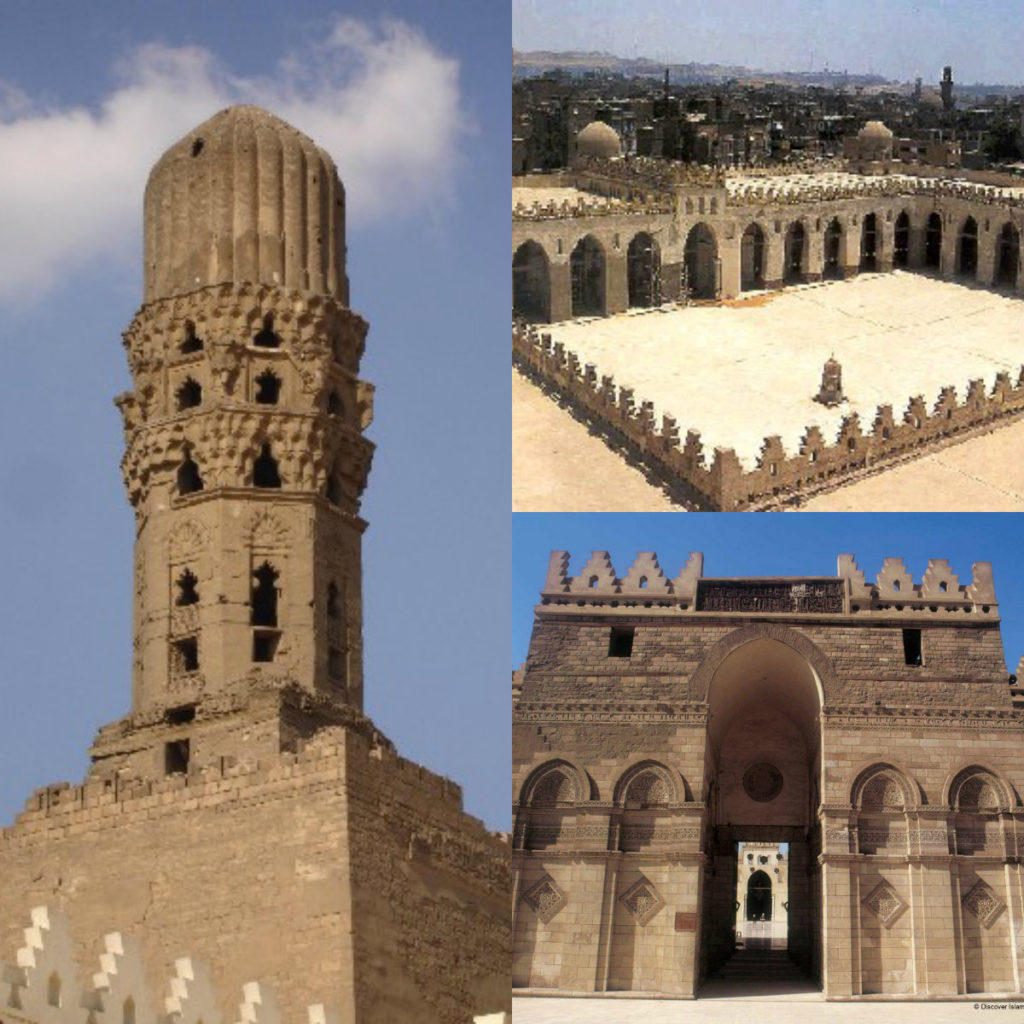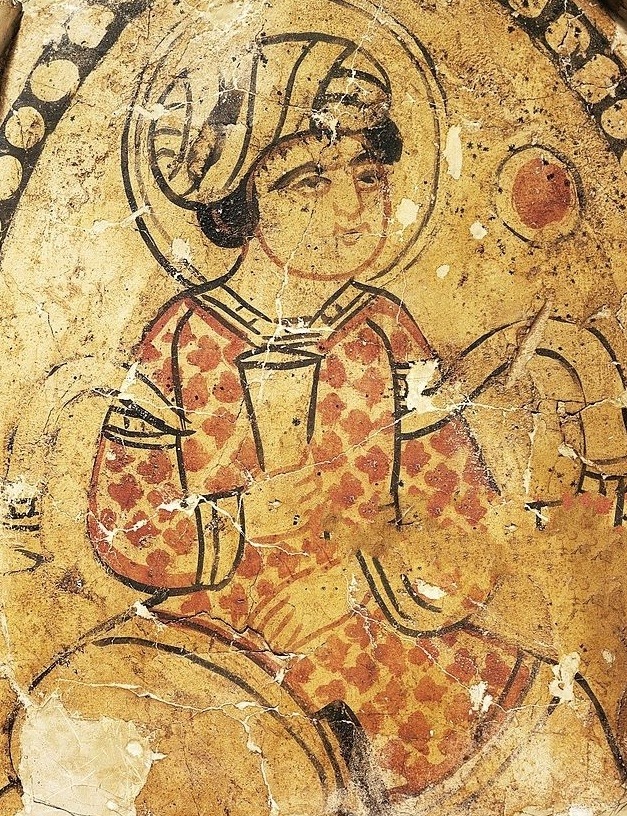When the Caliph went Mad: The reign of al-Hakim
10/15/2020Abu Ali Mansur, better known by his royal name, al-Hakim bi-Amr Allah “The Ruler by the Order of God”, was the sixth Fatimid caliph and sixteenth imam of Ismaili Shiism.
Born in 985, al-Hakim was the first Fatimid caliph born in Cairo. Son of the caliph al-Aziz Billah (975-996), his mother is still the subject of debate among historians, with different reports of who she would have been since the days of al-Hakim, as is the case with the chronicle of al-Musabbihi.
Al-Hakim came to power in 996, when he was only 11 years old. That year, his father al-Aziz Billah, then caliph of the Fatimid Empire, would visit Syria, a place ruled by the Fatimids and under pressure from the Byzantines. Right at the beginning of his trip, still in the city of Bilbeis (Egypt) the caliph fell ill, staying in bed, probably due to problems with kidney stones or something like that.
When the caliph saw that these were his last moments in his life, he called Qadi1 Muhammad ibn an-Numan and General Abu Muhammad al-Hasan ibn Ammar to take care of his son al-Hakim after his departure. After that, al-Aziz spoke directly to his son, in an account later narrated by al-Hakim himself:
“I found him with nothing on his body but rags and bandages. I kissed him, and he pressed me to his bosom, exclaiming: “How I grieve for thee, beloved of my heart,” and tears flowed from his eyes. He then said: “Go, my master, and play, for I am well.” I obeyed and began to amuse myself with sports such as are usual with boys, and soon after God took him to himself. Barjawan [the treasurer] then hastened to me, and seeing me on the top of a sycamore tree, exclaimed: “Come down, my boy; may God protect you and us all.” When I descended he placed on my head the turban adorned with jewels, kissed the ground before me, and said: “Hail to the Commander of the faithful, with the mercy of God and his blessing.” He then led me out in that attire and showed me to all the people, who kissed the ground before me and saluted me with the title of Caliph.”2
The following day, the Fatimid delegation heading towards Syria would return from Bilbeis to Cairo. Arriving there shortly before the afternoon prayer, it was not until the other day that the caliph al-Aziz would be buried beside his predecessor, al-Muizz.
His Goverment
Before al-Hakim was old enough to be the new ruler of the Caliphate, his father determined that the eunuch Barjawan would be the regent of the Empire. Qadi ibn an-Numan and general ibn Ammar remained responsible for the guardianship of al-Hakim.
There was much anticipation about al-Hakim as the new caliph. He had spent his childhood studying literature, investigating the sciences and observing the stars. Now, being the new leader of the Fatimid Dynasty, he would seek to expand his dominance throughout the Muslim world, and perhaps the entire world as well.
His empire expanded from North Africa and Sicily to Syria, including even the holy cities of Islam on the Arabian Peninsula. However, Cairo was his homeland, a place that he nurtured a certain special affection, and he could be seen wandering around the city during the day or even at night, sometimes alone.
During his rule, tensions between Shiites and Sunnis had reached a boiling point. Thus, the greatest rivals of the Dynasty commanded by al-Hakim were precisely the Abbasids of Baghdad, who sought to undermine the influence Fatimids Ismaili Shia.
If external tensions were not enough, al-Hakim would also have to face internal problems in his territory. An example of this was in the Fatimid army itself, where two opposing factions were constantly in rivalry, the Turks and the Berbers. Going further, there was also tension between the caliph and his viziers (wasites).
A peculiar fact during the reign of al-Hakim was the appearance of a sect around the caliph, the Druze. Its founder, Muhammad ad-Darazi claimed that al-Hakim was the very incarnation of God. After the disappearance of the caliph in 1021, the Druze continued to believe that al-Hakim was a divine manifestation, interpreting his disappearance as a mere reversion to a non-human form3. Ironically, the movement’s founder would be executed under the orders of al-Hakim himself in 1018.
However, despite his external and even internal conflicts, ranging from problems with his army to a sect that considered him God, al-Hakim’s behavior was unstable and unpredictable, even to the point of promulgating laws that restricted women from leaving home. To illustrate the madness of the ruler, he tried to impose a law that prohibited shoemakers from making shoes for women. However, in addition to the problem with women, al-Hakim also had other eccentricities, banning the traditional Egyptian dish known as mulukhiyya, on the grounds that he was a favorite of the extinct Umayyad caliphs of Damascus, persecutors of the early Shiites. Al-Hakim even ordered a systematic killing of dogs in Egypt.

Among the caliph’s madness moments, his persecution of Christians and Jews was the most insane of all. For them, al-Hakim was a relentless being.
During the first period of his government, al-Hakim was more intolerant towards the Sunnis, even in 1005 ordering the Prophet’s companions and first three caliphs, Abu Bakr, Omar and Uthman to be publicly cursed. Going further, Muhammad’s own wife, Aisha, would also be cursed for denying the caliphate of the Prophet’s nephew, Ali, who according to Shiite doctrine was Muhammad’s legitimate successor.
Although in a certain period of his government the tolerance with minorities of different religions was greater than with Sunni Muslims, a year before the public curses against the companions of the Prophet, in 1004 the caliph would prohibit Christians from celebrating Easter and the Epiphany of the Lord. In 1005 al-Hakim ordered Christians and Jews to follow the ghiyar, the “law of differentiation”, in which these religious minorities would have to wear specific garments, just as in the case of Jews carrying a bell and Christians carrying a cross. In the case of Christian and Jewish women, they would have to wear shoes with two different colors, a black and a red one. These provisions regarding religious minorities were maintained until 1014.4
Between the years 1007 and 1012 things would be better for Sunnis, but they would become increasingly hostile to the People of the Book5. On October 18, 1009, the mad caliph would have the Holy Sepulcher destroyed, as he was outraged at the Descent from the Sacred Fire6 practiced by Christians annually in Jerusalem (and up to this day), considered a fraud by al-Hakim. Several historians point out that the persecution of Christians in the Levant that ignited the future speech of the Crusades began with the attitudes of al-Hakim.

Continuing his persecutions, al-Hakim banned Christian processions, and a few years later all Palestinian convents and churches would be destroyed or confiscated7. Decades after the damage done by the maddened caliph, the Byzantine emperor Constantine IX would rebuild the Holy Sepulcher under the permission of the caliph al-Mustansir.
There would also be forced conversions, but later between 1012-1021 the caliph would allow Christians and Jews who were forcibly converted to return to their former faiths, and could even rebuild their homes and places of worship8. During this period, the caliph would be more tolerant towards the People of the Book, but he would return with his intolerance against Sunnis, and as ironic as it may seem, he would also be hostile towards Shia Muslims.
Despite the caliph’s madness, his persecutions and megalomaniacal outbreaks, his reign cannot be summed up this way, as he made several investments in the culture and intellectuality of the Fatimid Caliphate, as is the case with the foundation of the House of Knowledge9 (Dar al-Alem). During his reign, the royal library contained numerous books, and the caliph himself being a great enthusiast of academic advancement and intellectuality.
In addition, the caliph controlled a complex bureaucratic system, ranging from the highest ranking officials to inspectors in the local markets. He was also very generous with the constructions he made or renovated, furnishing mosques with beautiful decorations to the point of sending boxes containing thousands of copies of the Qur’an, some even written in gold for a mosque in Fustat.
Although it is because of the madness he committed while ruling the Fatimid Dynasty that al-Hakim is remembered, it is at least necessary to cite the above contributions to the culture and intellectuality of his time.
He disappeared in 1021 without leaving many traces, until today it is not known what happened to the caliph. However, at the time many of those who deified him made absurd parallels between his disappearance and the death of Prophet Muhammad. In that sense, Muhammad would have died in the 11th year of the Islamic calendar, while al-Hakim would have disappeared exactly 400 years later in the year 411 of the Islamic calendar.
Idolized by some and hated by others, al-Hakim was a controversial figure in Islamic history, but also one of the most interesting ones precisely because of his eccentricity, sometimes a fanatical and megalomaniac persecutor, and sometimes an intellectual enthusiast.
Notes:
[1] A qadi is a muslim judge who judges according to shariah;
[2] Ver a obra de O’LEARY (2001);
[3] ELKAMEL (2010);
[4] STILLMAN (2003);
[5] People of the Book is an expression used in Islam to designate the faithful of the other two Abrahamic religions, Christianity and Judaism;
[6] According to Orthodox Christians, it is a miracle that occurs every year in the Church of the Holy Sepulcher in Jerusalem on the Saturday before Easter. The Fire, considered miraculous, does not burn the skin or the garments of those who touch it;
[7] OUSTERHOUT (1989);
[8] ARNOLD (2018);
[9] Do not mistake it with the House of Wisdom from Baghdad.
Bibliography:
ELKAMEL, Sara. Caliph of Cairo: The rule and mysterious disappearance of Al-Hakim bi-Amr Allah. Egypt Independent. 2010;
NKRUMAH, Gamal. The Crazed Caliph. Al-Ahram. 2009;
OUSTERHOUT, Robert. “Rebuilding the Temple: Constantine Monomachus and the Holy Sepulchre” in The Journal of the Society of Architectural Historians, Vol. 48. 1989;
O’LEARY, De Lacy. A Short History of the Fatimid Khalifate. Routledge. 2007;
STILLMAN, Yedida Kalfon. Arab Dress: A Short History – From the Dawn of Islam to Modern Times. Boston Publishers. 2003;
ARNOLD, Sir Thomas Walker Arnold. The preaching of Islam: a history of the propagation of the Muslim faith. Palala Press. 2018.
